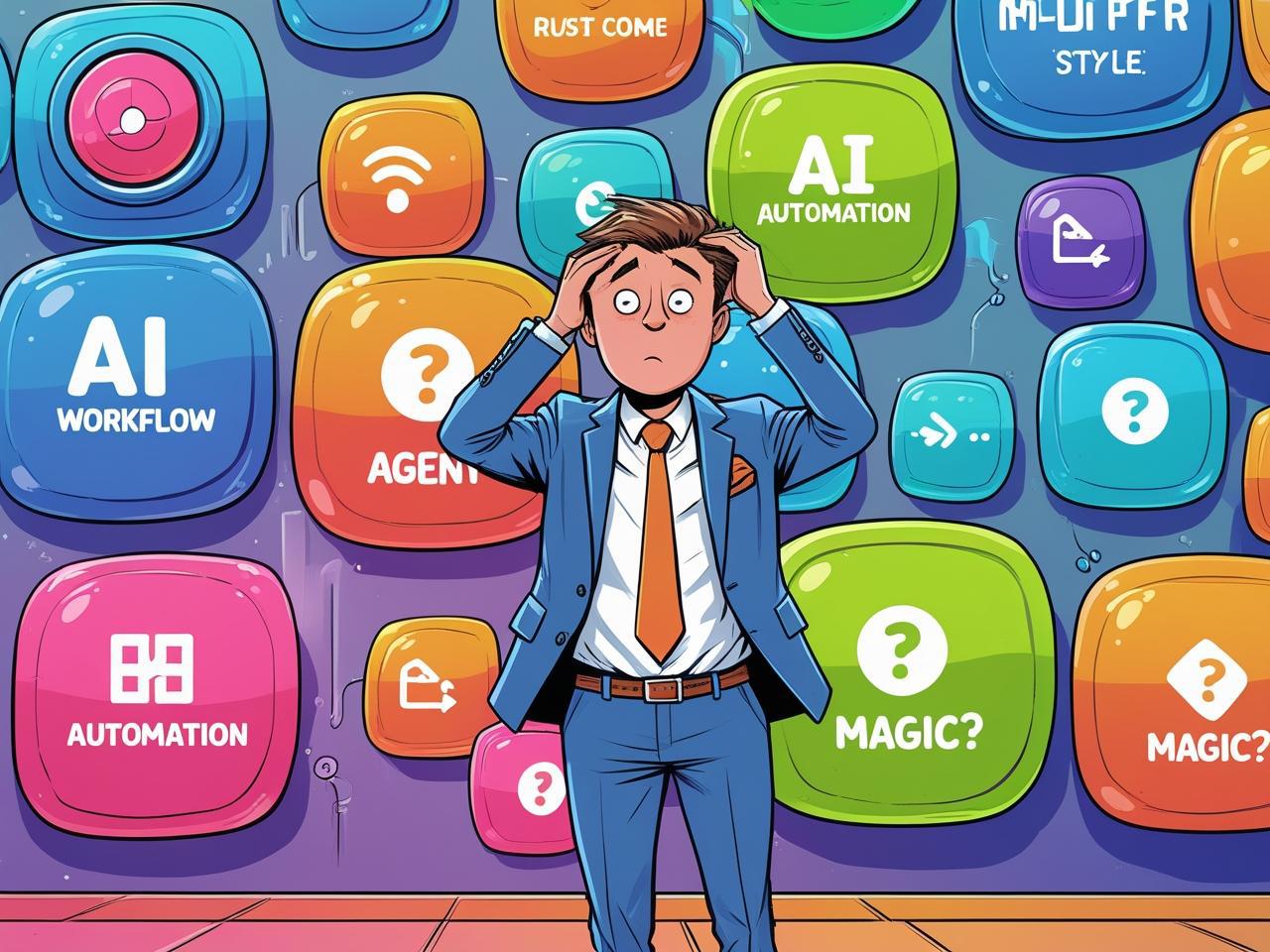
The language around AI is all over the place.
Terms like:
- "AI agent"
- "AI automation"
- "End-to-end AI workflows"
- "Autonomous assistants"
...get thrown around with little regard for what they actually mean.
The result? Confusion. Leaders assume they’re adopting something advanced when in reality, they’re working with basic tools. Teams overestimate what AI can do. Or worse — they assign too much autonomy to systems that aren’t built to handle it.
What’s missing is a clear, practical understanding of how much autonomy the AI actually has.
So let’s break it down.
The 3 Levels of AI Agency
1. Non-Agentic AI – The Skilled Tool
This is where most of today’s AI lives. These systems respond only when prompted. They don’t plan. They don’t make decisions. They wait.
Examples:
- ChatGPT responding to direct prompts
- Image generators like Midjourney
- Predictive dashboards
- Zapier workflows that require pre-set triggers
Analogy: Like a calculator. It’s smart, but it never acts unless you press the buttons.
2. Semi-Agentic AI – The Junior Partner
Semi-agentic systems can handle multi-step tasks, plan within limits, and take some initiative. But they still rely on humans to set goals and step in when something goes off-script.
Examples:
- AutoGPT-style tools that break down goals and use tools
- GitHub Copilot that helps with code, but doesn’t write whole apps
- Recruitment AIs that screen and schedule, but leave hiring to humans
- Semi-autonomous vehicles that handle highway driving but require a driver to take over when needed
Analogy: Like a junior staff member. They can get things started, handle repeatable tasks, and know when to ask for help.
3. Fully Agentic AI – The Autonomous Operator
This is the rarest — and riskiest — category. These systems pursue goals independently, decide on tactics, adapt to problems, and execute without supervision.
Examples:
- AI-powered trading systems that operate without human input
- Autonomous supply chain managers that reroute and re-stock automatically
- Drone fleets that plan and execute missions cooperatively
Analogy: Like a project lead who works independently, makes decisions, and takes ownership.
Are these widespread in 2025? Not really. Most systems called "autonomous agents" today are closer to semi-agentic, at best.
Where the Confusion Happens
Here's the ambiguity: many AI systems are marketed as agentic, but when you look closely, they’re not. They're:
- Chatbots connected to tools
- Workflows with LLMs plugged in
- Scripted automations with a shiny interface
Just because something runs without constant supervision doesn’t mean it’s agentic. The key question is: Who’s making the decisions?
Here’s a quick reference:
Here’s a quick reference:
🔹 Term You’ll See: “AI Workflow”
What it usually means: Manual or scripted task sequence
Real category: Non-Agentic
🔹 Term You’ll See: “Automation”
What it usually means: Triggered logic (Zapier, Make, etc.)
Real category: Non- or Semi-Agentic
🔹 Term You’ll See: “AI Agent”
What it usually means: A tool with light memory or chaining
Real category: Semi-Agentic (usually)
🔹 Term You’ll See: “Autonomous GPT”
What it usually means: LLM + plugins running steps
Real category: Semi-Agentic (at best)
🔹 Term You’ll See: “Assistant”
What it usually means: Could be anything — context matters
Real category: Varies
Why It Matters
If you can’t tell whether an AI system is helping or deciding, you’re flying blind.
You might:
- Overtrust tools that can’t adapt
- Underutilize systems that could save hours
- Fail to design proper oversight for real autonomy
But once you know where on the agency spectrum a system falls, everything changes. You can plan, delegate, monitor, and scale intelligently.
Final Thoughts
Most useful AI in 2025 is still non-agentic or semi-agentic. That’s fine — if you understand the difference.
Use tools for what they are. Design workflows based on actual capabilities, not hype. And if you’re considering AI for your business?
Start by asking this: Is the AI just responding — or is it acting?
Need Help?
I help organisations with AI readiness and AI education — so they can make informed, strategic decisions about how to use these tools responsibly and effectively.
Get in touch and let’s have a chat.
Whether you’re automating tasks or exploring AI agents, I’ll help you build the clarity and confidence you need to move forward.